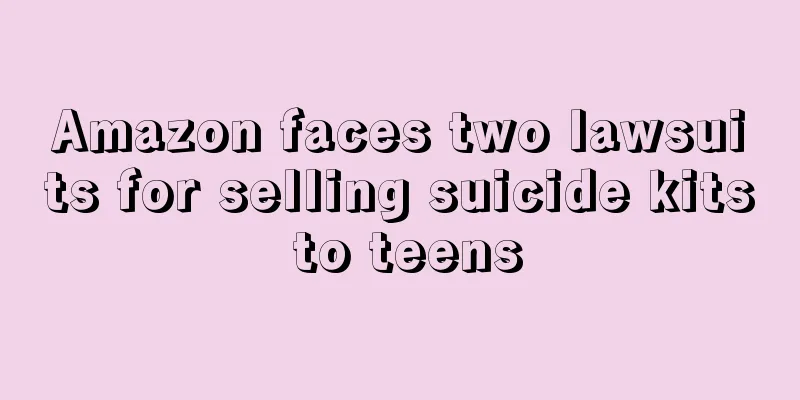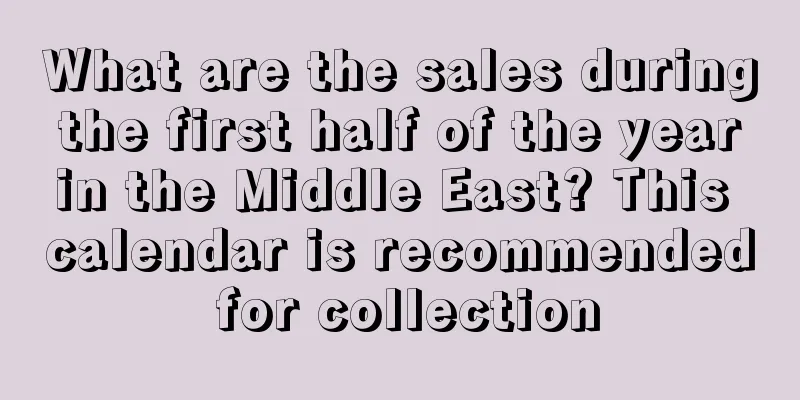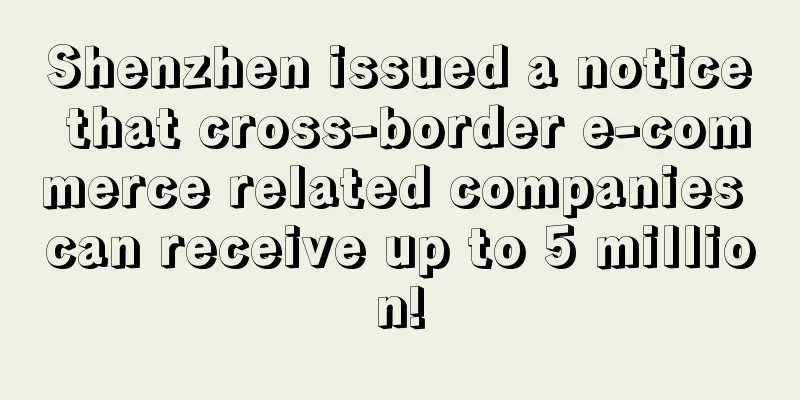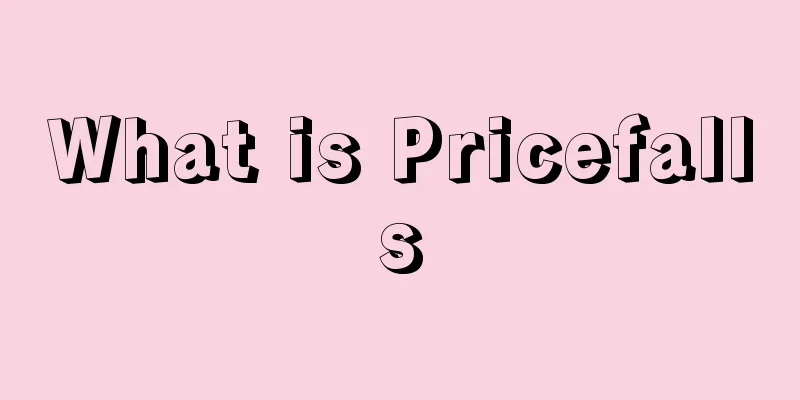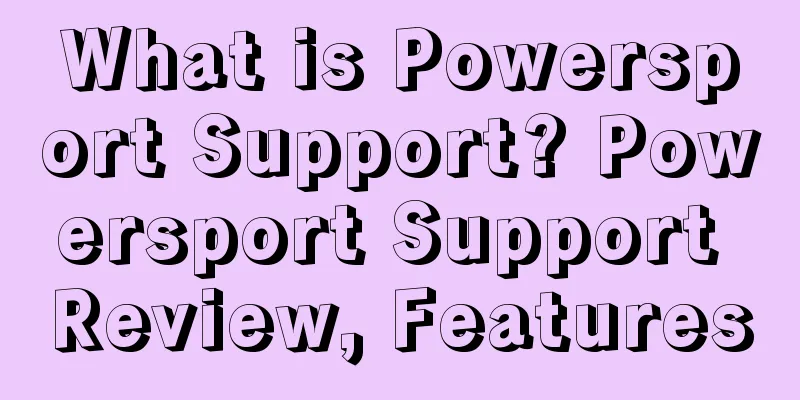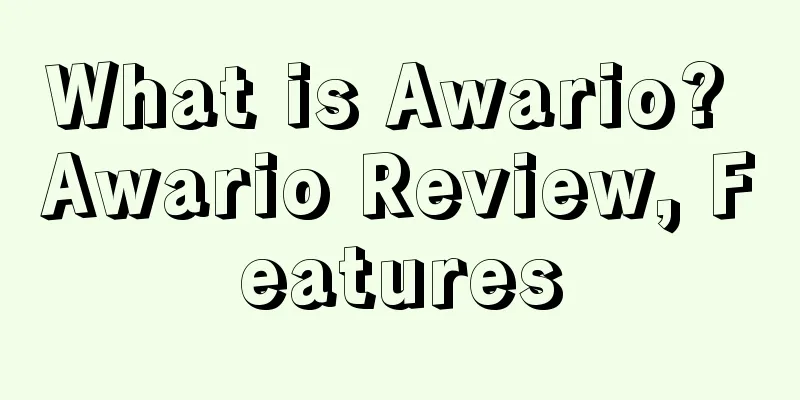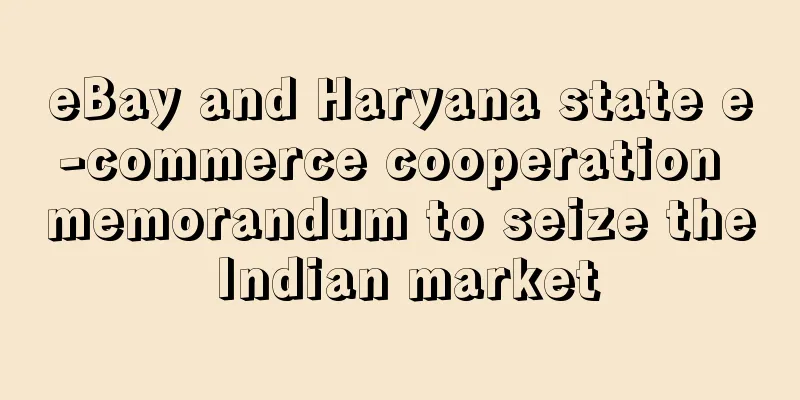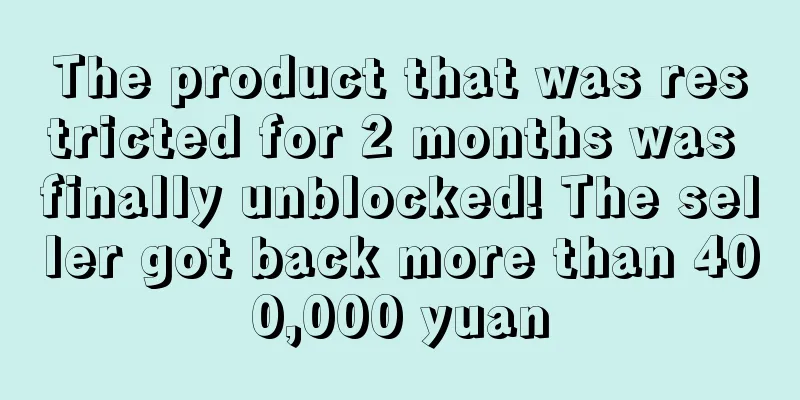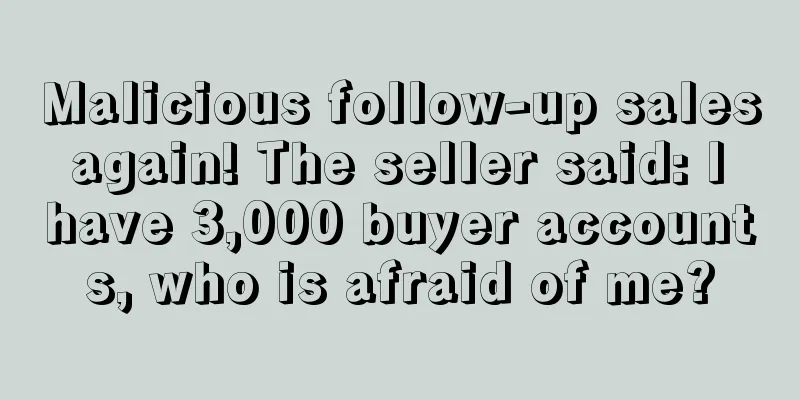What is Amazon's Intellectual Property Policy? Amazon's Intellectual Property Policy Review, Features

|
Amazon is committed to providing customers with the widest selection of goods on Earth and creating an amazing customer experience. Amazon does not allow listings that infringe on the intellectual property of brands or other rights holders. If you offer products for sale on Amazon, you must comply with all federal, state, and local laws and Amazon policies that apply to those products and product listings.
Three common infringement methods on the Amazon platform 1. Patent Infringement . Patents include three types: design patents, utility patents, and invention patents. 2. Copyright infringement. Copyright infringement generally involves copyright infringement of some classic images (these are usually detected by robots) and the theft of other people's pictures. 3. Trademark infringement: mainly the logo of goods or services.
How to write a POA 1. Reasons for selling suspected infringing products and/or uploading suspected infringing content. 2. The measures taken to ensure that you no longer infringe. 3. How to avoid future infringements. 4. Any other relevant information.
How to determine infringement 1. Use product keywords to search Google patents. 2. Google image search and identification. 3. Find the product you need to develop, and determine whether the product has a patent based on the supplier's price and minimum order quantity. Generally, if the price is higher and the minimum order quantity is larger, it is very likely that there is a patent. 4. Determine whether a product has a patent from the perspective of market capacity and customers. The fewer people who follow or sell the product, the more likely the seller is to own the patent.
How to prevent it 1. Ensure the legitimacy of the supply channels. When selecting products, it is necessary to prevent possible product infringement issues from the supply chain. Understand the production capacity and qualifications of the manufacturer/supplier to avoid imitations and fakes. If you find that a product has a trademark of another company, it is best to check it on the trademark website first. Once you find that the trademark is valid, but the trademark owner is not your supplier and the supplier cannot provide you with a letter of authorization, it is recommended not to sell the product. 2. When a seller acts as an agent and sells a brand’s products on Amazon, he or she needs to obtain formal authorization for the brand’s trademark before posting the listing. It should be noted that only trademark holders are eligible to conduct brand authorization. Some agents are not qualified to authorize other sellers who open stores on Amazon. Only after obtaining formal authorization from trademark holders can sellers legally use trademark rights. 3. When posting a listing, it is recommended to use original pictures and text descriptions. The title of the listing and the keywords in the Search Terms cannot contain other people’s brand names. 4. When setting the store name, you need to pay attention to whether the store name involves trademarks registered by others. You cannot copy other well-known brand names, nor can you use brand names that are likely to mislead buyers.
Differences between relevant regulations in China and the United States All sellers also need to be aware of the basic differences in intellectual property law between China and the United States. In the United States, intellectual property law is based on who was “first to use” and “first to invent” a product. Products and companies that fall into these categories are eligible for protection. Chinese law is very different from that of the United States. There is no rule of "first use" or "first invention". Without registration, merchants do not have the corresponding right to use and are not protected. At the same time, China's registration categories are more complicated. Unlike the 45 international registration categories used in most countries, China has hundreds of categories. If the seller is not registered in the category related to the product, others can still register and use your trademark for sales. In summary, sellers can take many forms to protect their intellectual property rights. But it is a good choice to turn to official channels, such as applying for protection at the US Patent Office and local government offices. Once these property rights are approved in the United States, sellers can also consider submitting an application to the World Intellectual Property Organization (WIPO). If you are seeking trademark or copyright protection, remember that you can apply for it yourself, you don't need a lawyer. In this process, sellers must be fully prepared. In addition to applying for property rights protection in the place of sale, they should also apply for protection in the place where the product is purchased. Finally, sellers should remain vigilant, always guard against plagiarism and infringement by third parties, and be prepared to take relevant countermeasures.
Processing 1. What happens if I receive a warning that my product listing has been removed due to a report of intellectual property infringement? What should I do if I hold intellectual property rights? If you receive an infringement warning, you have several options for filing an appeal or dispute: 1. If the product involved in the warning you received has never been sold on Amazon, please reply to the notification you received and let us know that you have never sold the reported product. We will investigate to determine whether there is an error. 2. If you have established a relationship with the rights owner who filed the complaint (license, manufacturing or distribution agreement, etc.), we recommend that you contact the rights owner and request a withdrawal of the complaint. If we receive a withdrawal request from the rights owner, your content may be restored. The warning you received contains the contact information of the rights owner. 3. Trademark response: If you believe that the rights owner or Amazon has made an error in removing your product information due to counterfeiting or trademark infringement, please reply to the notification you received and explain the specific reasons why you believe the processing was incorrect. Please provide any invoice or order number that can prove the authenticity of the product. We will then re-evaluate this notification and your content may be restored. 4. Patent response: If you believe that the rights owner or Amazon made an error in removing your product information due to patent infringement, please reply to the notification you received and explain the specific reasons why you believe the handling was incorrect. 5. Copyright Response: If you have received a copyright infringement warning and believe it was made in error, you may file a counter-notification under the Digital Millennium Copyright Act. Please send your counter-notification to the email address provided in the copyright warning. An effective counter-notification must include the following information: Your physical or electronic signature. You may sign electronically by typing your name and indicating that it is used as your signature: "Seller's Name". Identification of the material that has been removed or disabled and the specific location where the material was located before it was removed or disabled. Usually one ASIN is sufficient. · A statement under penalty of perjury that you have a good faith belief that the material to be removed or disabled was removed or disabled as a result of mistake or misidentification. Your name, address, and telephone number, and a statement that you consent to the jurisdiction of Federal District Court for the judicial district in which your seller address is located; or, if you are located outside of the United States, for the United States District Court for the Western District of Washington, and that you will accept service of process from the person who provided notification of alleged copyright infringement or an agent of the person who provided notification of alleged copyright infringement. 2. What should I do if I have received multiple warnings of intellectual property infringement? If you have received multiple warnings of intellectual property infringement and believe that the products you sell are genuine, please file a dispute through your Seller Central account and provide the following information: A list of the allegedly infringing ASINs and at least one of the following: An invoice proving the authenticity of your goods; · Order number to prove the authenticity of the product; · Letter of authorization from the rights holder (not a forwarded email). 3. What should I do if my account is suspended? If your account has been suspended because a rights owner submitted a notification of intellectual property infringement regarding your products or content, you may provide us with a viable Plan of Action that includes the following information: The reason why you are selling allegedly infringing goods and/or uploading allegedly infringing content. The steps you have taken to ensure that you do not infringe any rights . How to avoid infringement in the future . Any other relevant information. You should send a Plan of Action through your account dashboard or respond to the account suspension notice you received. We will evaluate your Plan of Action and determine whether your account can be reinstated. Please note that Amazon may terminate the accounts of repeat infringers in appropriate circumstances . 4. What should I do if I don’t know that I have infringed on the intellectual property rights of others? Sellers should follow relevant laws and Amazon's policies. Amazon takes intellectual property infringement very seriously. Even if a seller unknowingly infringes on the intellectual property of others, we will still take action and the seller's account may receive a warning or be suspended. You should consult an attorney for help to ensure that your business has appropriate procedures in place to prevent intellectual property infringement.
FAQ Q: What is copyright? A: Copyrights are designed to protect original works, such as videos, movies, songs, books, musicals, video games, and paintings. In general, copyright law is designed to incentivize the creation of original works for the public good. To qualify for copyright protection, a work must be created by an author and must have a certain degree of originality. If you are the author of an original work, you generally own the copyright in that work. The Digital Millennium Copyright Act (DMCA) is a U.S. law that governs copyrighted material online. The DMCA applies only to copyrights, not trademarks or patents. Q: How do I know if I own the copyright to one or more images used on my detail page? A: The author of an original work usually owns the copyright to that work. If you take a photo of your own product, you usually have copyright protection for the photo and can use it on the product detail page to sell the product. However, if you get your photo from someone else's website, you may not upload it to the product detail page without the permission of the website owner. Note: When you add a copyrighted image to a product detail page, you grant Amazon and its affiliates permission to use that material. Even if you no longer sell the product, other sellers can list the product for sale on the page where you added the copyrighted image. To ensure that you do not infringe on the copyrights of others, be sure to only upload images or text that you created yourself or that you have permission from the copyright holder to upload. Please visit the U.S. Copyright Office website for more information about copyright basics and frequently asked questions. Q: How do I know if I own the copyright to the product I sell? A: Please make sure that the products you are selling do not infringe on the copyrights of others, otherwise you may lose your selling privileges and face possible legal consequences. You can sell someone else’s copyrighted work on Amazon if you have permission from the copyright owner or if your use is protected by the “first sale” doctrine. The first sale doctrine generally permits the resale of authentic, legally purchased physical items (such as books or CDs) without the copyright owner’s permission. Q: What is a trademark? A: A trademark is a word, symbol, or design, or a combination of words (such as a brand name or logo) that a company uses to identify its goods or services and distinguish them from those of other companies. In other words, a trademark indicates the source of the goods or services. Generally speaking, trademark law is intended to prevent buyers from being confused about the source of goods or services. Trademark owners typically protect their trademarks by registering them with a country-specific trademark office, such as the U.S. Patent and Trademark Office. In some cases, a person or company may acquire trademark rights based solely on the use of the mark in commerce, even if the mark has never been registered with a particular country's trademark office. These rights are called "common law" trademark rights and may be more limited. Q: What aspects does trademark protection include? A: Generally, trademark law protects sellers of goods and services from confusion among buyers about who provides, endorses, or is affiliated with a particular good or service. A trademark owner may be able to prevent others from using a particular mark or a confusingly similar mark if that mark is likely to deceive buyers or cause confusion as to whether the goods being sold are the trademark owner's goods. Q: What types of trademarks appear on Amazon? A: Trademarks are usually displayed on Amazon’s product detail pages in the form of the product and brand name listed on the product detail page. For example, the trademark “Pinzon” is displayed in the brand name or “Top Line” section of the product detail page as shown below. The “Pinzon” trademark also appears in the product name section of the product detail page (“Pinzon Flannel Sheet Set – King, Sage”). Q: Do I always need permission from the rights owner to use a trademark when creating a detail page? A: Not being a trademark owner does not necessarily mean you cannot sell other companies' products. Generally speaking, if you create a detail page using a trademark without authorization, it will only constitute infringement if this behavior is likely to cause confusion as to the source, endorsement, or ownership of the product. Q: As a seller, when can I use someone else's trademark when creating a detail page? A: Generally, sellers can use other people’s trademarks in the following circumstances: If selling genuine products, sellers can list those products using a trademark name. For example, a seller who lists genuine "Pinzon" products is not necessarily infringing on the ownership of the Pinzon trademark because the seller only uses the trademark to identify genuine products. When the ordinary dictionary meaning of the trademarked words is used. When a product is truthfully represented as compatible with a trademarked product. For example, if a seller offers a special cable that is compatible with Kindle e-readers and states that it is “compatible with Kindle,” this generally does not constitute trademark infringement as long as the statement is truthful and not confusing. However, please note that certain statements with the word “similar” (such as saying that a product is “similar to Kindle” or “better than Kindle”) violate Amazon’s product listing policies. Q: How can I ensure that I do not violate trademark laws when opening a store on Amazon? A: Please make sure that the products you are selling and the content of the product information do not infringe on other people's trademarks, otherwise you may lose your sales privileges and face possible legal consequences. If you decide to sell products on Amazon, please consider the following questions first: Are the products sold from reputable dealers? How were these goods acquired and can they be proven to be genuine if there is a problem? Are these products described in a way that could confuse customers (for example, could certain descriptions on the detail page for a generic sheet set lead customers to believe they are purchasing a Pinzon sheet set)? Are brand names or trademarks used to describe compatibility in a way that is not confusingly genuine (generally permitted) rather than in a look-alike manner (not permitted)? If you are unsure, consult an attorney. Q: What is counterfeiting? A: Counterfeiting is a specific type of trademark infringement. Counterfeiting refers to the illegal imitation of a registered trademark or a mark that is extremely similar to a registered trademark in whole or in part in order to sell goods that do not belong to the trademark holder. Counterfeiting requires the use of a registered trademark on the product or packaging. Similar products sold on different product detail pages are not counterfeit if the registered trademark is not improperly used, even if the products may be similar or identical to the trademarked product. Q: What is a patent? A: A patent is a form of legal protection for an invention. An issued patent gives its owner the right to exclude others from making, using, offering for sale, selling, or importing the invention into the United States for a fixed number of years. Q: Are there different types of patents? A: In the United States, there are two main types of patents: utility patents and design patents. A utility patent is the most common type of patent and is obtained for a new machine, article of manufacture, composition of matter, process, or improvement in any of these and generally protects the structure and function of a good rather than its appearance. On the other hand, a design patent for an industrial product may be obtained for the appearance of the product (but not the structure or function of the product). Q: What is the difference between patents, trademarks and copyrights? A: A patent differs from a trademark in that it protects an invention (such as a new machine) rather than a word or logo used to identify the source of goods (such as a brand name for a product). A patent differs from a copyright in that it does not protect the expressive content of a creative work, such as a book or photograph, but rather protects a specific invention, such as a new method for printing books or a new type of camera. The U.S. Patent and Trademark Office provides resources to learn more about patents. Q: How can I ensure that I do not infringe on other people’s patents when opening a store on Amazon? A: The manufacturer or distributor of the product may be able to help you resolve patent-related issues. If you are not sure whether your content or product infringes on someone else's patent, you should consult an attorney before posting your product on Amazon. |
<<: What is MOQ? MOQ Review, Features
>>: What is Power Of Attorney? Power Of Attorney Review, Features
Recommend
Amazon warehouses are seriously overwhelmed! Many sellers' inventory capacity dropped sharply in November
Cross-border logistics is constantly turbulent! M...
The strike spread to ONT1 warehouse, and a large number of sellers suffered heavy losses!
After a while, the anger of the drivers did not s...
What is Argent Mill? Argent Mill Review, Features
Argent Mill is the result of years of searching an...
What is Enoda Logistics? Enoda Logistics Review, Features
Shenzhen Yinuoda Import and Export Co., Ltd. is a ...
Wireless headset sales in India are booming, with peak shipments reaching 8 million pairs!
During Amazon's Great Indian Festival this ye...
With annual revenue of nearly 3 billion, Amazon suppliers are making a fortune
According to the first quarter report of 2021, Ao...
99% of Canadian Gen Z adults use social media
In 2021, nearly two-thirds (63.2%) of Canada’s po...
What is Vide Dressing? Vide Dressing Review, Features
Vide Dressing is the first C2C second-hand clothin...
Congestion at U.S. ports worsens, container ship waiting time extends to 8 days
Container ship wait times at Southern California ...
What is Feedback
Feedback (store evaluation/order evaluation) refer...
It’s the start of the school year in Peru, and these products are the best-selling ones!
The South American country of Peru also welcomed ...
Amazon Releases 2020 Brand Protection Report, Fully Communicating Amazon’s Latest Progress in Promoting “Zero Counterfeit”
May 10, 2021 - Amazon today released its 2020 Bra...
Tmall Double 11 growth potential exploded: 402 brands achieved sales exceeding 100 million! 38,600 brands achieved year-on-year growth of more than 100%!
As of midnight on November 11, 402 brands had sal...
What is DaWanda? DaWanda Review, Features
DaWanda is a German e-commerce platform for handi...
What is LootBoy? LootBoy Review, Features
LootBoy is a free loot app for gamers: get LootPa...
